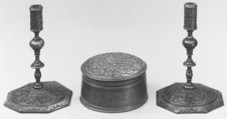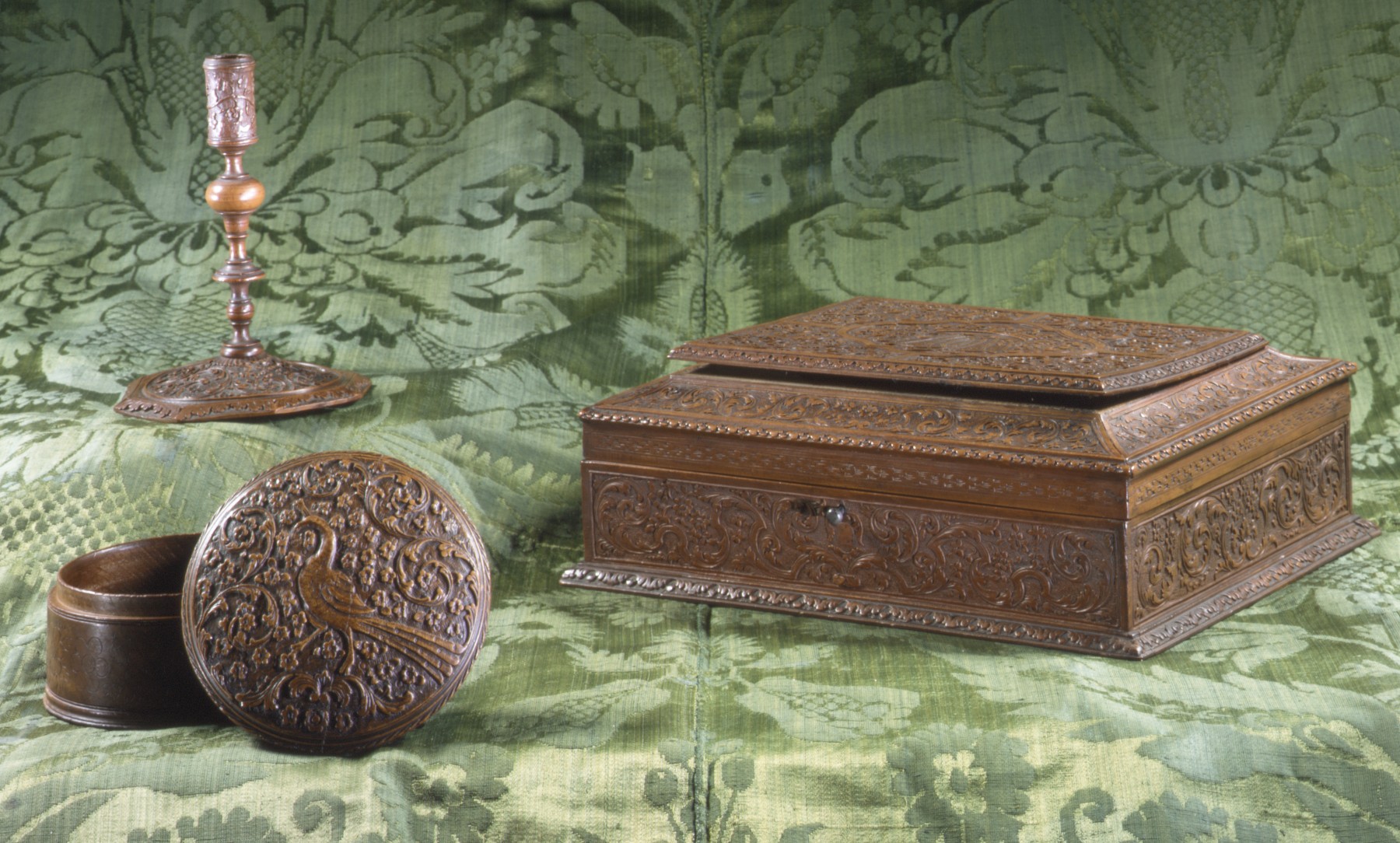Box (part of a set)
Nicolas François Foulon French
Circular box, its lid densely carved in low relief with a strutting peacock surrounded by acanthus scrolls and flowers, while the actual box has incised floral decoration. This type of carving is typical for a group of pieces made in Nancy, in eastern France. The very fine-grained cherry wood, known as “bois de Sainte Lucie,” grew in a nearby forest. Named for the patron saint of the Lorraine region, this type of fruitwood was appreciated for its reddish-brown color and its pleasant smell reminiscent of cinnamon. Furthermore, it lent itself beautifully to carving often in intricate patterns resembling goldsmith work.
This box would have been part of a dressing-table set and would have held powder or other types of make-up. The use of “bois de Sainte Lucie” for dressing-table sets was stimulated by Louis XIV’s sumptuary edicts of 1689 and 1709, which caused much French silver to be melted down.
Due to rights restrictions, this image cannot be enlarged, viewed at full screen, or downloaded.
This artwork is meant to be viewed from right to left. Scroll left to view more.



